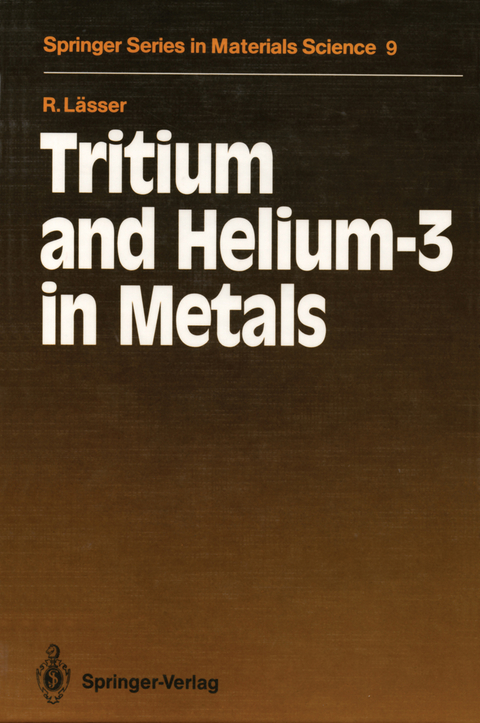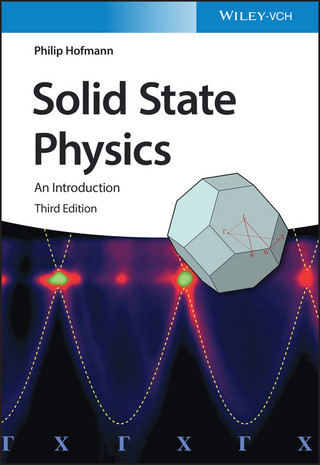
Tritium and Helium-3 in Metals
Springer Berlin (Verlag)
978-3-642-73512-7 (ISBN)
1. Introduction.- 1.1 Brief Historical Survey.- 1.2 Hydrogen Isotopes.- 1.3 Hydrogen in Metals.- 1.4 Helium in Metals.- 1.5 Organization of the Book.- 2. General Aspects of Tritium.- 2.1 Production of Tritium.- 2.2 Risks Associated with Tritium.- 2.3 Discharge of Tritium to the Environment.- 2.4 Tritium Handling in Future Fusion Reactors.- 2.5 Tritium Waste Handling.- 3. Preparation of Metal Tritides.- 3.1 Electrolytical Charging of Metals with Tritium.- 3.2 Breeding of Tritium in Metals.- 3.3 Tritium Charging of Metals by Means of Nuclear Reactions and Ion Implantation.- 3.4 Tritium Charging of Metals from the Gas Phase.- 3.5 Tritium Charging of Metals by Means of Metal Tritides.- 3.6 Metals Employed for Tritium Storage.- 3.7 Permeability of Tritium in Metals.- 4. Analysis of Tritium in Metals.- 4.1 Outgassing and/or Combustion.- 4.2 Gas Release Behaviour of MTr Samples.- 4.3 Tritium Induced X Rays.- 4.4 Tritium Imaging.- 4.5 Tritium Autoradiography.- 5. Properties of Protium, Deuterium and Tritium in Selected Metals.- 5.1 Solubility of Protium, Deuterium and Tritium in Palladium.- 5.2 Solubility of Protium, Deuterium and Tritium in Palladium Silver Alloys.- 5.3 Solubility of Protium, Deuterium and Tritium in Lithium and Yttrium.- 5.4 Solubility of Protium and Deuterium in Vanadium.- 5.5 Isotope Dependence of the Phase Boundaries in the Pd-X, V-X and Nb-X (X = H, D, T) Systems.- 5.6 Optical Vibrations of Protium, Deuterium and Tritium in Niobium.- 5.7 Superconductivity of the Pd-H, Pd-D and Pd-T Systems.- 5.8 Isotope Dependence of Phonon Dispersion Curves in PdD0.63 and PdT0.7.- 5.9 Isotope Effect in Dingle Temperatures and Extremal Cross Sections of the Fermi Surface in PdHr, PdDr and PdTr.- 5.10 Diffusion of Protium, Deuterium and Tritium in Selected Metals.- 5.11 Lattice Dilation in V, Nb, and Ta Produced by Protium, Deuterium and Tritium.- 6. Properties of Helium-3 in Selected Metals.- 6.1 Basic Properties of Helium in Metals.- 6.2 Helium Release from Metal Tritides.- 6.3 He Bubbles in Metal Tritides.- 6.4 Acoustic Emission by Metal Tritides.- 6.5 Swelling of Various Metal Tritides.- 6.6 Lattice Parameter and Width of the Rocking Curves of TaTr0-cHec Samples in the ? Phase.- 6.7 Preliminary Results for Helium-3-Induced Effects in Selected Metals.- 7. Conclusion and Outlook.- References.
| Erscheint lt. Verlag | 21.12.2011 |
|---|---|
| Reihe/Serie | Springer Series in Materials Science |
| Zusatzinfo | IX, 159 p. |
| Verlagsort | Berlin |
| Sprache | englisch |
| Maße | 155 x 235 mm |
| Gewicht | 270 g |
| Themenwelt | Naturwissenschaften ► Physik / Astronomie ► Atom- / Kern- / Molekularphysik |
| Naturwissenschaften ► Physik / Astronomie ► Festkörperphysik | |
| Naturwissenschaften ► Physik / Astronomie ► Thermodynamik | |
| Schlagworte | Hydrogen • lattice parameter • Materials Science • Nuclear Engineering • Solid state physics • Superconductivity |
| ISBN-10 | 3-642-73512-6 / 3642735126 |
| ISBN-13 | 978-3-642-73512-7 / 9783642735127 |
| Zustand | Neuware |
| Haben Sie eine Frage zum Produkt? |
aus dem Bereich


